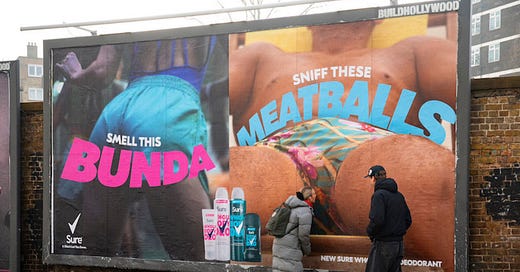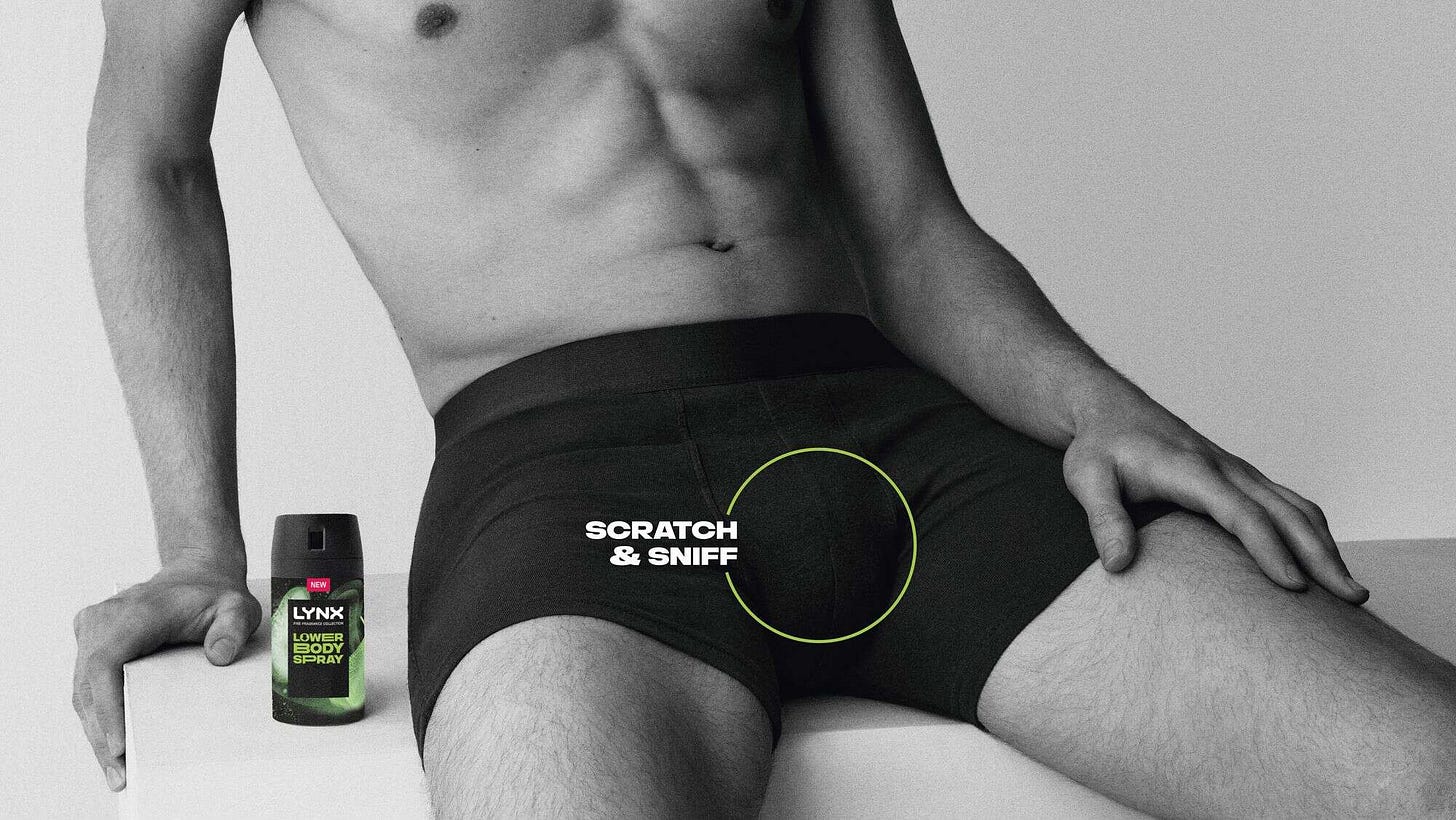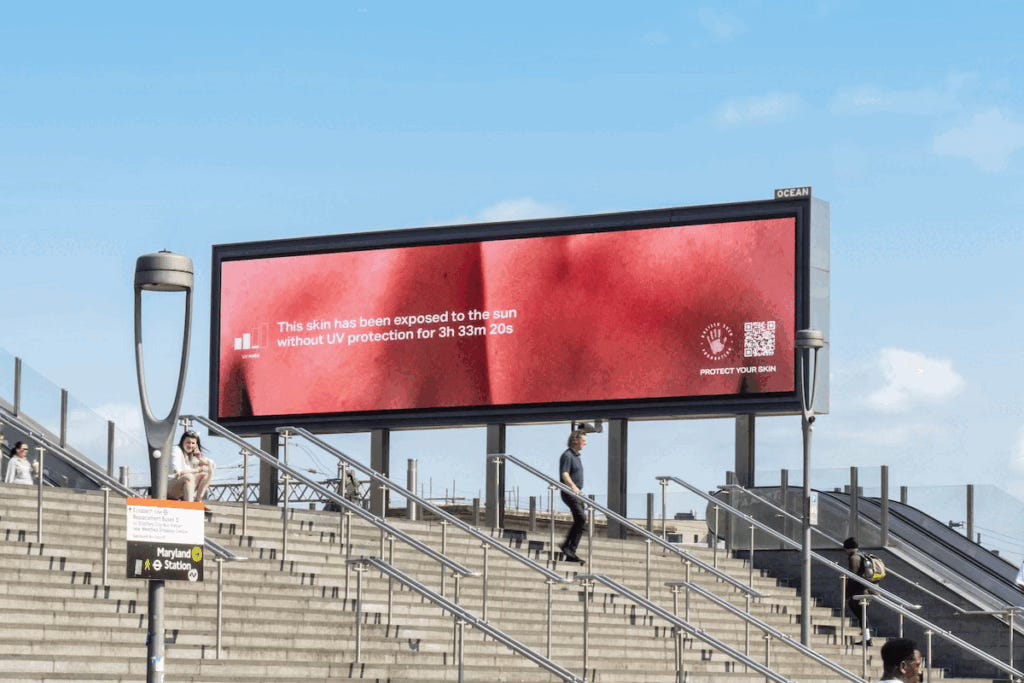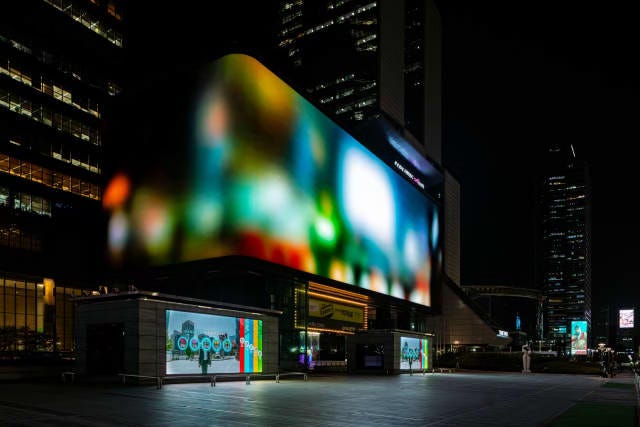Out-of-home (OOH) advertising has always been about grabbing your attention when you're on the move. A giant face on a building, a perfume bottle you can see from half a mile away, a headline you read at a red light. But lately, OOH has been shifting gears, becoming something you touch, smell, even taste. As our industry keeps leaning into experience and sensorial connection, this new generation of ads is starting to invite interaction. The line between ad and activation is blurring and turning public space into something you don’t just see, but feel.
🌬️ Scent Is Stealing the Spotlight
There’s something uniquely powerful about scent. It bypasses rational thinking and hits straight in the limbic system: memory, emotion, desire. In the beauty world, we’ve long known that perfume isn’t just a product, it’s an experience. Deodorant and fragrance companies are uniquely positioned to play in this space. Their products are invisible until experienced, so what better way to cut through visual noise than with a whiff of something unexpected?
Lynx (Axe in some markets) took a playful approach to that for its new lower-body spray. At first glance, their campaign in London looked like any high-street underwear ad: grayscale imagery, toned abs, tight briefs. But printed on the briefs? Scented ink. Rub here, and you get to smell the actual fragrance.
US brand Billie used out-of-home ads as a foundation for online virality. Their posters popped up across Manhattan, inviting people to "scratch and sniff the pits" to sample their new line of products. But the real reach came from social. The brand partnered with a local content channel to capture reactions and spread them across Instagram and TikTok. The result? Millions of views and tons of buzz, all from a street-level scent test turned shareable moment.
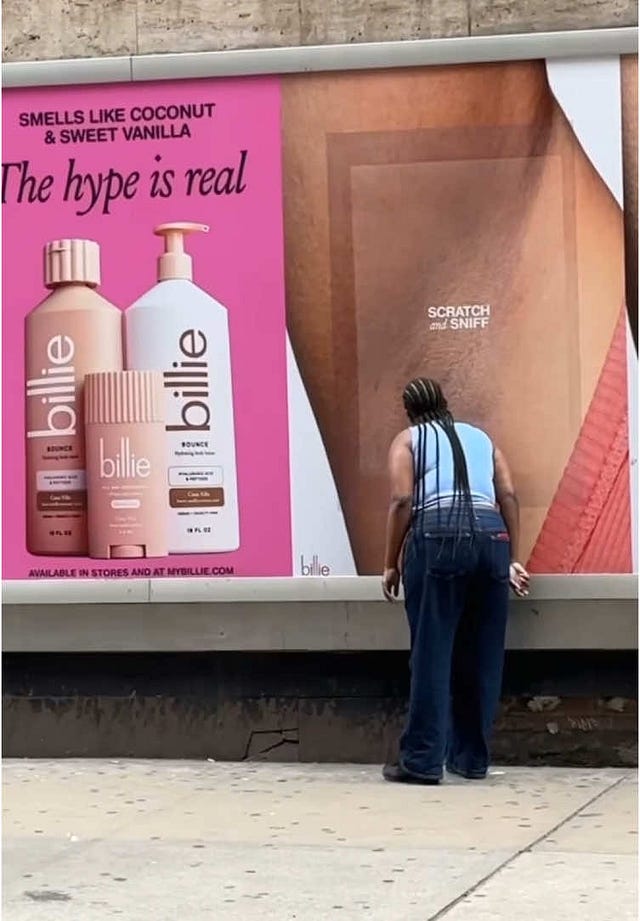
 Tiktok failed to load.
Tiktok failed to load.Enable 3rd party cookies or use another browser
Sure took a humorous route to expand the deodorant conversation. Their one-day billboard in Camden featured cheeky pictures and invited passers-by to sniff beyond the pits. The message was that body odour doesn’t stop at the underarms. It was a light-hearted, high-impact way to make people think (and laugh) about using deodorant in places they hadn’t considered (yet) and a clever push for category growth.
🧴 The Rise of Testable Billboards
Sampling isn’t new, but what’s changing is where it happens. Billboards and pop-ups are merging into one, with OOH spaces now offering a literal feel for the product.
The Inkey List tapped into this with a billboard that doesn’t just show hydration, it offers it. Their London activation featured what they call the world’s first "hydrating billboard". Visitors could press a button on the billboard to receive a free 30ml Hyaluronic Acid Serum. The campaign also teased a new product launch, offered a skincare quiz with personalised routines, and gave select guests a deeper dive into the brand.
Pho, a UK-based restaurant brand, used a similar mechanic but for food. For two days in January, it set up a broth-dispensing billboard outside London’s Victoria station. Commuters could grab a branded cup, fill it with either beef or chicken bone broth, and walk away with a warm, collagen-rich dose of comfort, plus a discount voucher for a future meal.
In an experience-driven economy, we’re more likely to remember what we’ve touched, tasted, or smelled. These billboards blur the line between media and moment and for beauty brands, especially, they open up space to reimagine what a product trial can look like outside the store.
🦄 What’s Next?
If the billboard of today can smell, deliver products, or serve soup, what might it do tomorrow? As tech, data and culture continue to merge, OOH could move from canvas to interface.
More Than Ads
OOH infrastructure could evolve into engines of contribution. If ad spaces already light our streets, why not let them power something bigger behind the scenes? In Australia, health insurer nib partnered with Dentsu to turn digital screens into shared processing hubs. These billboards use their idle computing power to run medical simulations, helping researchers study cancer and Alzheimer’s, all while still showing regular ads.
Education in Real Time
In a future where media is both reactive and responsible, prevention could become a key part of public messaging. The British Skin Foundation launched a DOOH campaign showing real-time UV impact on skin, using live solar data and AI to simulate sunburn on digital billboards. The images morphed throughout the day, revealing blistering damage across different skin tones.
OOH as Public Art
With visual noise everywhere, people are increasingly fed up with the clutter. Repurposing billboards as public art could give these ever-present screens a new reason to exist. Olafur Eliasson’s "Lifeworld" did just that, transforming digital billboards in New York, London, Seoul, and Berlin into dreamlike moving artworks. The project replaced ads with moments of calm, proving that in cities overwhelmed by messaging, billboards can serve a purpose beyond selling.
A SCENARIO FOR THE FUTURE OF BEAUTY
It’s 2035, and Lucy is walking through central London. She steps beneath a beauty canopy in Hyde Park, one of the city’s new Care Zones. A gentle prompt on a public screen asks if she’d like a hydration and UV top-up. She taps yes and is misted by an embedded dispenser. The SPF formula she is sprayed with is adjusted in real time based on the day’s heat index and pollution levels.
Later that afternoon, a mirrored digital wall outside her usual café reflects back a carousel of lip colours trending in her part of town. Deep berry is having a moment. Curious, Lucy scans a QR code and selects a shade. A biodegradable sample, perfectly portioned, slides from a nearby panel. She slips it into her pocket. She’ll wear it to dinner.
That evening, as Lucy heads home, she passes a sleek digital billboard near King’s Cross that doubles as a community hub. Powered entirely by integrated solar panels, the billboard not only displays calming animations and useful local news updates but also functions as a charging station for e-bikes and phones. Its base also emits gentle warmth on chilly evenings, offering comfort to passersby. This dual-purpose design has transformed advertising space into a shared urban resource, something that serves the community while quietly blending art, information, and utility.
🤿 TAKE A DEEPER DIVE ON THE TOPIC
Read this ad with your nose: the state of scent marketing.
Why your nose knows what sells.
Welcome to the era of sensory OOH.
Is poly-sensory branding here to stay?
Beauty’s most viral brands are moving offline.
As the physical and digital continue to merge, what if ads didn’t just sell to us but responded with us? What if they were less about broadcasting and more about sensing, adapting, even caring? Public space is a powerful stage, and advertising doesn’t have to play the same script. It can provoke a smile, spark a memory, offer a moment of quiet or even help solve global problems. The challenge now is: how meaningful could it be? What we build into our streets reflects what we believe about the people walking them. So maybe the real question isn’t what’s next for OOH but what kind of world we want it to reflect.
See you in the future 🔮


